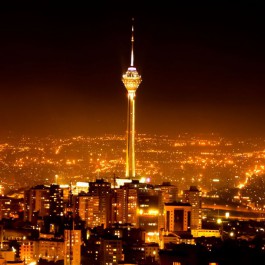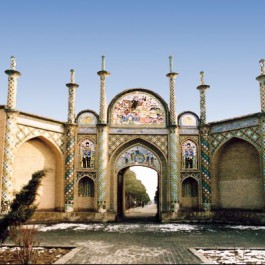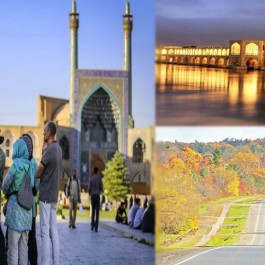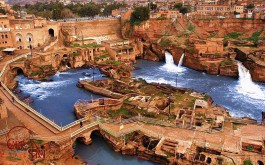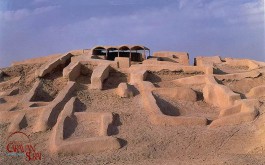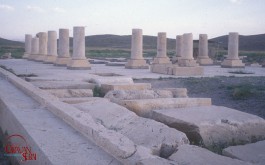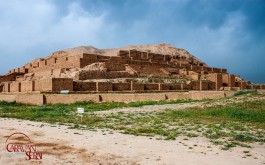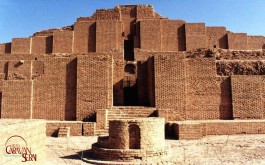Historical remnants of the ancient Iran are considered as touristy attractions.
A list of archeological sites for arranging Ancient Iran Exploration Tours are listed as the followings:
Tchogha Zanbil
Tchogha Zanbil is a place of worship that was constructed during Elamite era.
Tchogha Zanbil is an ancient place of worship which was built in a region between Khuzestan, Susa and Shooshtar provinces. It is an adobe structure dates back to approximately 3500 years ago and the first Iranian historical heritage that was registered on UNESCO list.
Pasargadae Complex
Pasargadae Complex is located in the north east of Fars province in Dasht-e Morghab.
This ancient stone structure is mostly famous because of the mausoleum of Cyrus. There are remnants of "Gate of All Nations", Kingdom Garden (also known as Pasargadae Iranian Garden), and the mausoleum of Cambyses. Pasargadae site has been registered on UNESCO list.
Persepolis
Persepolis is the name of an ancient city in Iran.
Following Pasargadae, Persepolis was designated as the capital of Achaemenid Empire where possesses the most prominent historic monuments of Iran. Persepolis was a thriving city for 200 years with amazing combination of art and architecture.
After passing 2500 years, visiting this monument is still attractive. Persepolis is a complex of palaces with its vast surroundings and the surprising numbers of carvings. This monument has undergone many destructions but it is still a symbol of ancient Iran where Naqsh-e Rostam and mausoleums of Achaemenid kings were embedded. A collection of carvings from Sassanid dynasty can be observed within the historical site.
Bishapur
Bishapur is one of Iran's ancient cities in Kazerun County, Fars province.
After Shahpour defeated Romans, another historic city was built during Sassanid Empire in Kazerun County, Fars province. Bishapur is a complete complex of palaces, houses and baths, temples and Mosaic Iwan that the glamour of its inscriptions, stone carvings, and mosaic decorations can be observed in the world's most reputable museums.
Behistun
Behistun inscription is one of the world's most significant documents and also the most important historic text during Achaemenid Empire.
The amazing inscription and the stone carving date back to Achaemenid Empire which can be found in Harsin valley along with some monuments remained from Sassanid Empire. Description of Darius the Great victory has been carved in multiple languages including Elamite, Akkadian and Pahlavi. The monument was registered on UNESCO list; unfortunately, it has undergone much destruction.
Shahr-e Sukhteh
Shahr-e Sukhteh is the name of an ancient municipal government in Iran.
Shahr-e Sukhteh was an ancient municipal government in the proximity of Zabol with 6000 years of civilization that is called the most modern city in the antique era. Sinuhe, the Egyptian well known doctor, mentioned Shahr-e Sukhte on his book. Gold, Jewelry, mosaic, pottery, wicker, and even the first animation of the world were found in this archeological site.
Arg-e Bam
Arg-e Bam is the largest adobe structure throughout the world which dates back to Sassanid Empire.
The largest adobe structure of the world belonging to Sassanid era was located on a route led to the Silk Road. The complex consists of various giant mansions in governmental area, Bazaar, school, and small houses in the public area. It was famous for its security and air conditioning feature throughout the region. The complex has undergone serious destruction because of Bam earthquake, but it was reconstructed.
Shushtar Historical Hydraulic
Shushtar Historical Hydraulic Structures are an integrated complex of bridges and giant tunnels to lead the water flow.
Shushtar Hydraulic Complex consists of ancient industrial structures which are unique in their type. The complex was a combination of bridges, mills, canals and tunnels that entirely were used to lead the water flow and its optimal use during Achaemenid Empire until the end of Sassanid Dynasty. It is also known as the most giant industrial complex across the world before the industrial revolution in Europe.
Takht-e Soleyman
Takht-e Soleyman is the name of a vast archaeological site in the West Azerbaijan province.
An enormous region near Takab city, in the West Azerbaijan province where has the largest educational, religious, social complex and also considered as the most significant place of worship during Sassanid Empire. This historical site had also been one of the three places for preserving Zoroastrin's Fire. The coronation ceremonies of Sassanid kings were held in Adur Gushnasp fire temple where some researchers believe it was the birthplace of the prophet Zoroastrin.
Bandar Siraf
Bandar Siraf is an ancient port near Kangan in Bushehr province.
Bandar Siraf is an ancient port in the proximity of Kangan in Bushehr province where resembles Masuleh in Gilan province due to its special architecture. It was known as a place where many races with diverse religions lived together and the ancient tombs are its evidence. Bandar Siraf had been also known as Iran's Mumbai that was the most thriving port across the Middle East but an earthquake destructed the whole region.
